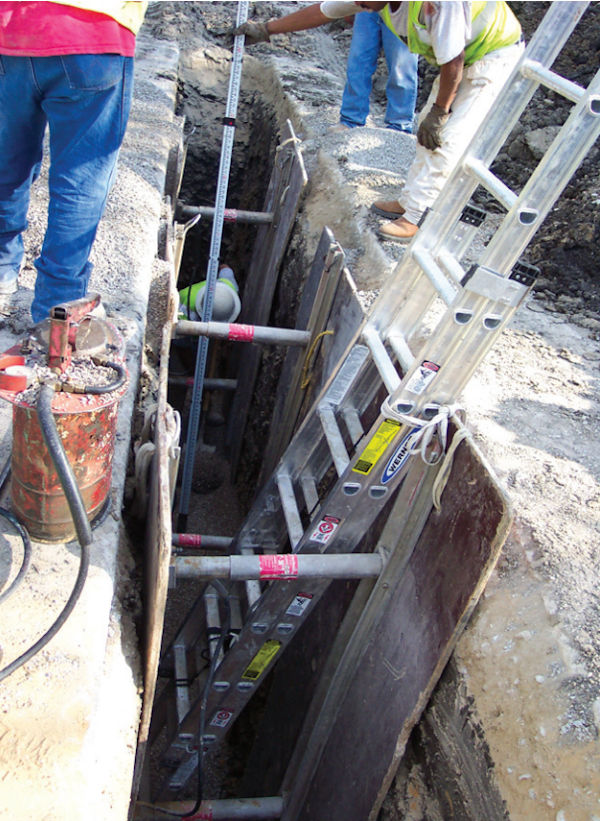SECTION 25 - EXCAVATION AND TRENCHING
25.A General.
The requirements of this Section are applicable to all Government and contractor work forces when their employees are performing excavation or trenching activities.
25.A.01 Excavation/Trenching Plan. An Excavation/Trenching Plan and/or Activity Hazard Analysis (AHA) will be prepared by the Competent Person (CP) for Excavation or a Registered Professional Engineer (RPE), submitted and accepted by the GDA prior to beginning operations.
- For excavations or trenches greater than 5 ft (1.5 m) in depth, both an Excavation/Trenching plan and AHA are required;
- For excavations/trenches less than 5 ft (1.5 m) in depth, or made entirely in stable rock, an AHA is required (See Sections 1 and 25.A.01.a) and the Excavation/Trenching plan is optional;
- The Excavation/Trenching Plan must include, at a minimum;
- (1) Activity Hazard Analysis (AHA). The AHA must include required information per Section 1 and in addition:
- (a) For all piping activities, include workers' increased exposure during connection activities (i.e. bent over, kneeling);
- (b) Methods and locations for egress;
- (c) Identification and credentials of the CP for Excavation;
- (d) Documentation that examination of the ground by the CP provides no indication of a potential cave-in.
- (2) Rescue plan and procedures (See Section 25.B.02). A rescue plan must be prepared and maintained when workers are working at depths in excess of 5 ft (1.5 m);
- (3) Diagram or sketch of the area where the work is to be done, with adjacent and nearby structures shown;
- (4) Projected maximum depth of the excavation;
- (5) Projected soil type and method of testing to determine soil type;
- (6) Planned method of shoring, sloping and/or benching;
- (7) Planned method for confined space entry, trench access and egress and atmospheric monitoring processes;
- (8) Location of utility shut offs (if required);
- (9) Proposed methods for preventing damage to overhead utility lines, trees designated to remain, and other man-made facilities or natural features designated to remain within or adjacent to the construction rights-of-way;
- (10) Plan for management of excavated soil/asphalt/concrete;
- (11) Plan for traffic control;
- (12) Digging permits (Excavation permits). All underground lines/utilities (communication lines, water, fuel, electric lines) must be located and protected from damage or displacement.
- (a) Utility companies and other responsible authorities must be contacted to locate and mark the locations and, if they so desire, direct or assist with protecting the underground installations.
- (b) The Contractor must obtain a "Digging Permit" (excavation permit) from Base Civil Engineers or other authority having jurisdiction prior the initiation of any excavation work. Requests for the permits will be processed through the GDA.
- (13) Certification of UXO clearance. Where excavations are to be performed in areas known or suspected to contain explosives, unexploded munitions, or military ordnance, surface and subsurface clearance by qualified explosive ordnance disposal (EOD) personnel must be accomplished prior to excavation work;
- (14) For Cofferdams: Controlled flooding plan, fall protection, access/egress and evacuation procedures.
Knowledge Check Choose the best answer for the question.
25-1. When are both an Excavation/Trenching plan and AHA required for excavations or trenches?
You forgot to answer the question!

